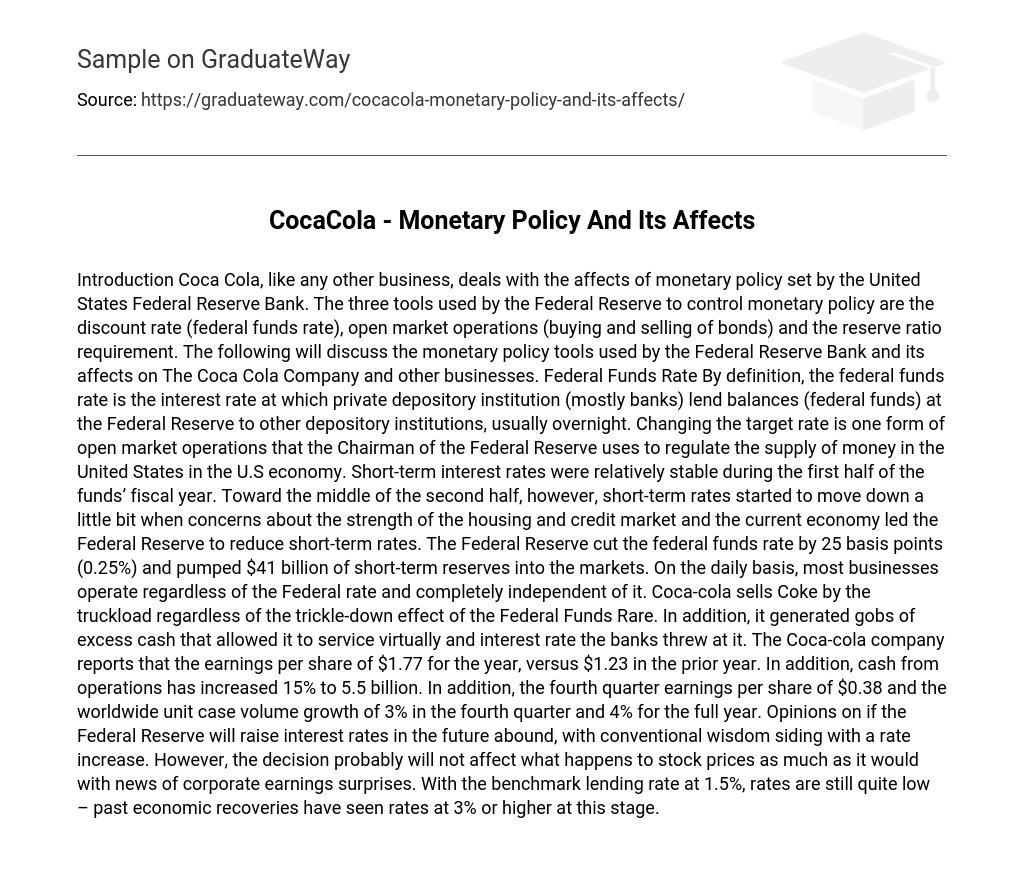Introduction: Coca Cola, like any other business, is influenced by the monetary policy set by the United States Federal Reserve Bank.
The Federal Reserve employs three methods to manage monetary policy: the discount rate (also called the federal funds rate), open market operations, and the reserve ratio requirement. This discussion will focus on these tools and their impact on The Coca Cola Company and other businesses. The federal funds rate refers to the interest rate at which private banks lend balances at the Federal Reserve to other banks, usually for a short period of time. By using open market operations, the Chairman of the Federal Reserve can adjust this target rate in order to regulate the money supply within the U.S economy. During the first half of fiscal year, short-term interest rates for these funds remained relatively steady.
Short-term rates in the latter part of the period saw a small decline due to concerns about the housing and credit market, as well as the current state of the economy. To address these concerns, the Federal Reserve decided to reduce short-term rates by 0.25%, injecting $41 billion into short-term reserves in the markets. However, it is important to note that most businesses operate independently from the Federal rate on a daily basis. For instance, Coca-Cola continues to sell Coke without being influenced by the indirect effects of the Federal Funds Rate.
The Coca-Cola company had sufficient cash flow to fulfill banks’ interest rate demands. Earnings per share for the year stood at $1.77, compared to the previous year’s $1.23. Cash from operations rose by 15% to achieve a total of 5.5 billion. Furthermore, fourth-quarter earnings per share amounted to $0.38 alongside a global unit case volume growth of 3% in the fourth quarter and 4% for the entire year.
Opinions on the Federal Reserve potentially increasing interest rates in the future vary, but most individuals expect rates to rise. However, compared to unexpected corporate earnings news, the impact of this decision on stock prices is predicted to be less substantial. Currently, the benchmark lending rate stands at a low 1.5%, while in past economic recoveries, rates during this phase were generally 3% or higher.





